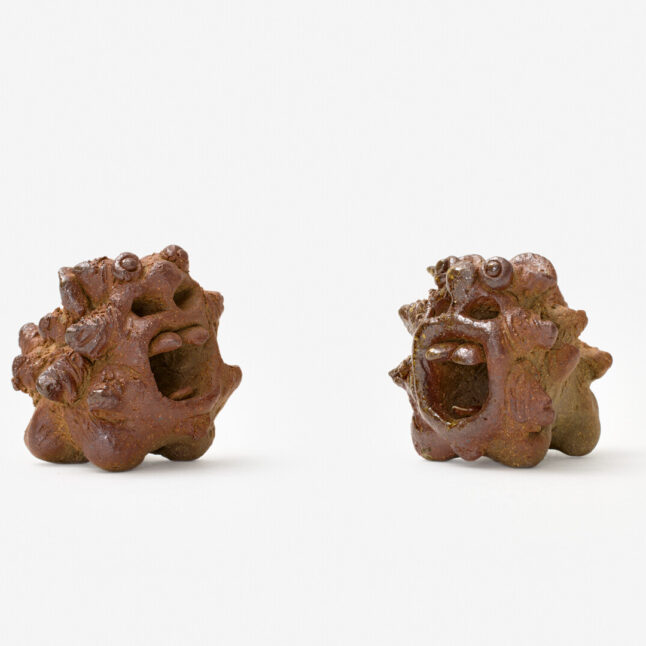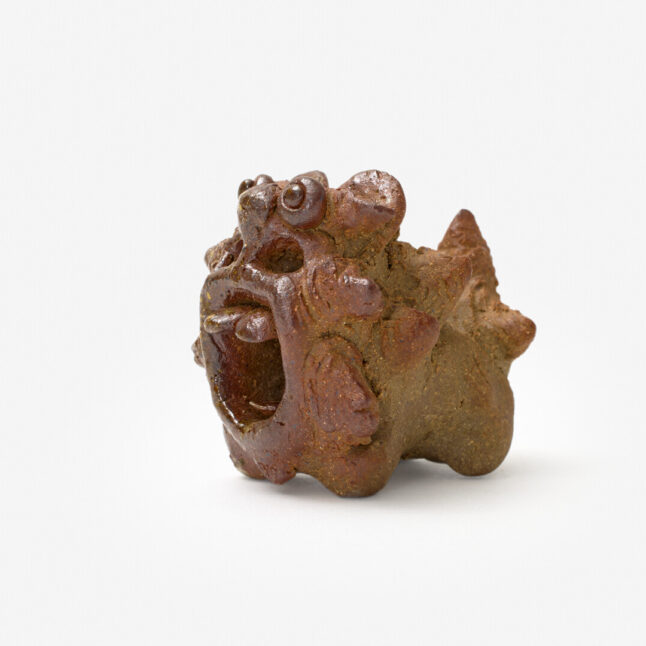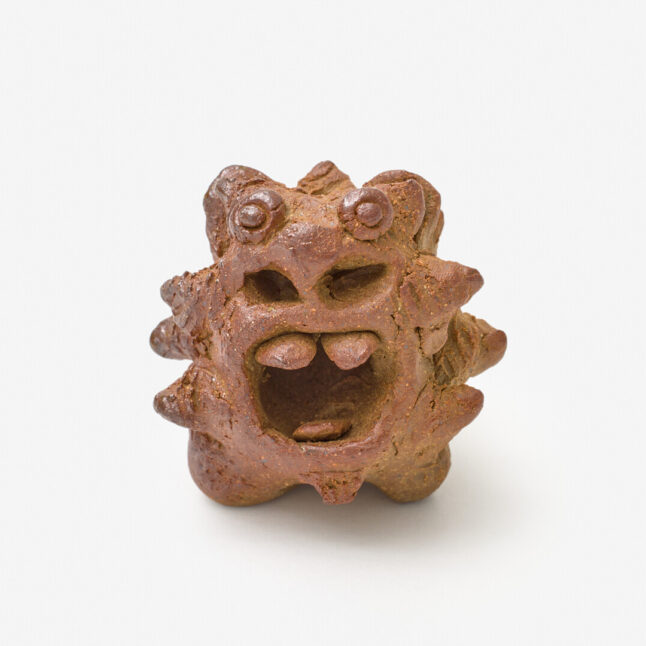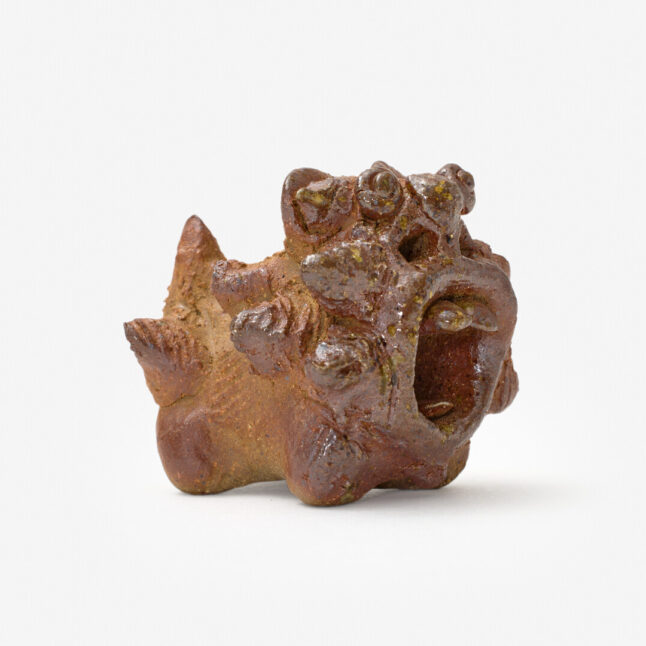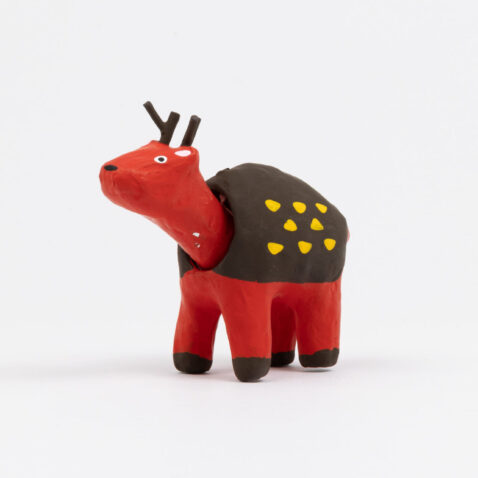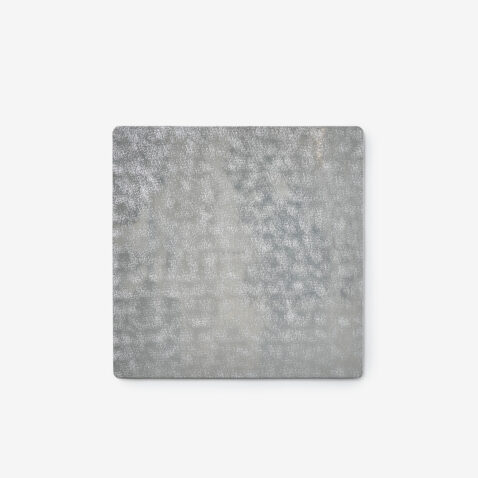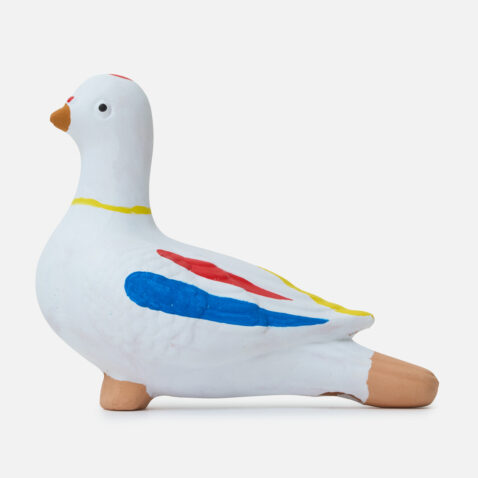Okinawan ceramics—known as yachimun in the local language— developed over the ages heavily influenced by Chinese, Korean and Southeast Asian pottery-making traditions, making them easily distinguishable from other styles of Japanese ceramics. This ornament was made in Yachimun no Sato (lit. ‘the village of pottery’) located in Yomitan, which is a famous production hub of ceramics on Okinawa Island. Yachimun no Sato can be considered as a newcomer in comparison to the main centre of Okinawan ceramics located in the Tsuboya District of Naha City. The village was established around 1980 after anti-pollution rules adopted in Naha sought to put an end to wood-fired kilns within the city. Potters unwilling to abandon the long-established traditions and techniques by switching to gas-fired kilns, moved their studios to Yomitan where a new, multi-chambered climbing kiln was built. Among them was Kinjō Jirō (1911-2004), who later became the first Important Intangible Cultural Property holder (Living National Treasure) from Okinawa Prefecture. In order to accommodate the growing interest in Okinawan ceramics and the influx of new potters and studios in Yomitan, a second 13-chambered kiln was built in 1990, located north of the original one, lending it the name Kitagama (lit. ‘northern kiln’). The kiln is mainly operated by four craftsmen, among them the maker of this shisā ornament, Yonahara Masamori (b. 1950), who enjoys experimenting with Persian blue glaze and actively holds exhibitions of his works.
Often displayed in pairs on rooftops or in front of gates, shisā are regarded as guardians or wards against evil in Okinawan culture. Derived from local myth their fantastical animal form resembles something between a lion and a dog. According to tradition, when displayed in pairs one shisā has its mouth open to scare away evil and bad fortune while the other has its mouth closed to keep in good fortune.
